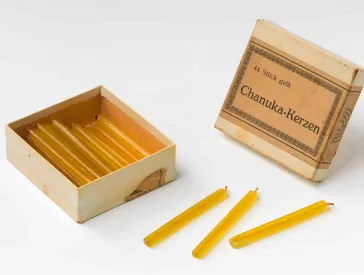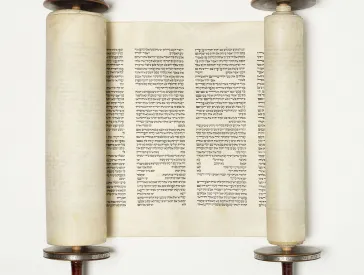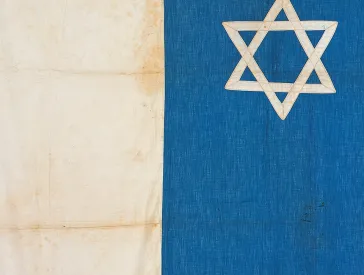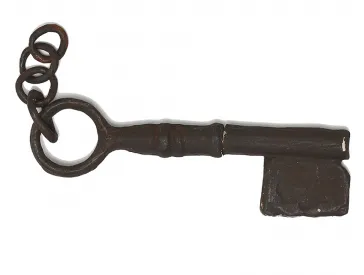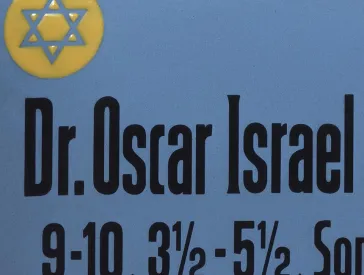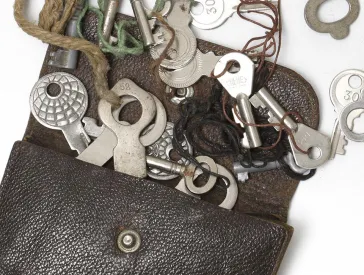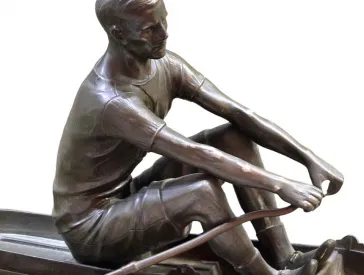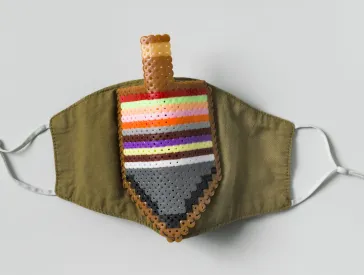An Unusual Wedding Gift
Object in Showcase
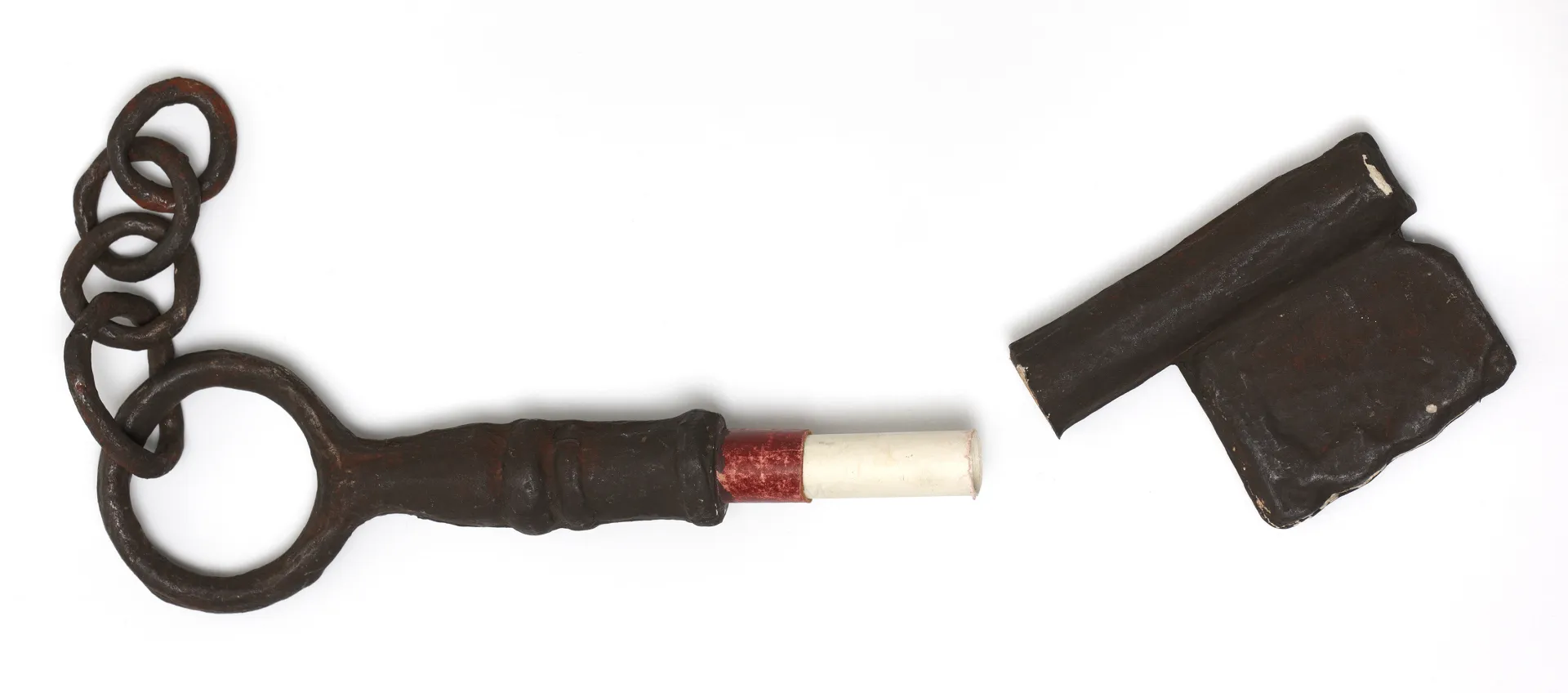
Cardboard key for the wedding of Margarete Apt to Georg Korant; Jewish Museum Berlin, Gift of Stephanie Wells, photo: Jens Ziehe
Margarete Apt (1882–1942) and Georg Korant (1874–1937) received an unusual gift for their wedding on 4 October 1903 in Breslau. The dark brown key is hollow and made of cardboard.
A Wedding Poem
When opened, the key reveals a rolled-up note for the bridal couple bearing a song titled "Altes Eisen" (Old Iron). The lyrics, loosely translated, go:
Yes, you laugh
That it's so daft
A tingling tongue at such a thing
How fine, we said,
That it's been made,
Georg and Grete's romance ring.
The Family Collection
This key is part of an extensive collection that we received from the granddaughter of the bride and groom. The collection includes letters, photographs, and documents that shed light on a German-Jewish family in the first half of the twentieth century – from the First World War through persecution, escape efforts, and deportation under Nazi rule.
Vain Efforts to Emigrate
Georg and Margarete Korant moved to Berlin as newlyweds. When her husband died in 1937 and her daughter emigrated to the USA in early 1939, Margarete Korant tried to leave the country for the United States or Cuba. Her letters to her daughter describe her situation in Berlin after war had broken out and her futile attempts to leave the country. On 25 January 1942, she was deported to Riga where she was murdered.
| Title | Cardboard Key for the Wedding of Margarete Apt to Georg Korant |
|---|---|
| Collection | Material Culture |
| Location and year of origin | Breslau, 4 October 1903 |
| Medium | Cardboard |
| Dimensions | 29,5 x 8 x 2,5 cm |
| Acquisition | Gift of Stephanie Wells |
Celebration song lyrics for the wedding of Margarete Apt and Georg Korant, Breslau, 4 October 1903; Jewish Museum Berlin, Gift of Stephanie Wells, photo: Jens Ziehe
Selected Objects: Collection Jewish Object: Material Culture (9)
